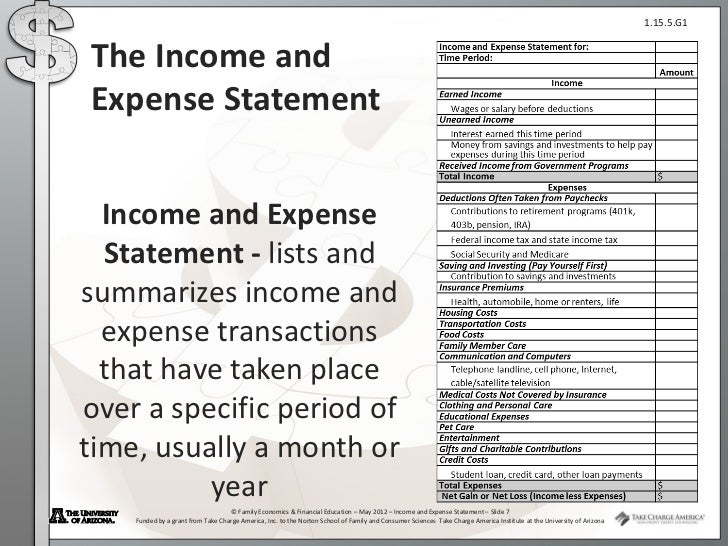Your Filing Status
by
Charles Lamson
:fill(FFCC00,1)/Lewis-Clark-lower-Columbia-3005-3x2gty-56a489ce3df78cf77282dea8.jpg) |
The taxes you pay depend in part on your filing status, which is based on your marital status and family situation on the last day of your tax year (usually December 31). Filing status affects whether you are required to file an income tax return, the amount of your standard deduction, and your tax rate. If you have a choice of filing status, you should calculate your taxes both ways and choose the status that results in the lower tax liability. There are five different filing status categories:

In general, married taxpayers who file jointly have a lower tax liability than if they file separately. However, sometimes these married couples pay more in total taxes than if they were single taxpayers. Combining the two incomes results in bracket creep---it pushes the couple into a higher tax bracket resulting in a "marriage tax." In an attempt to eliminate the marriage tax, 2003 tax legislation lowered taxes for married couples by making the standard deduction and the 15-percent bracket twice as large for couples compared with singles. There is not too much you can do if you are in a situation where filing jointly results in paying a marriage penalty, because it is illegal for married individuals to use the single filing status. But a couple planning a December wedding may reap considerable tax savings by postponing their wedding until January!
The tax brackets (rates) and payments for married couples filing separately are typically higher than for joint filers because the spouses rarely account for equal amounts of taxable income. In some cases, however, it may be advantageous for spouses to file separate returns. For instance, if one spouse has a moderate income and substantial medical expenses, filing separately may provide a tax savings. It is worth your time to calculate your taxes under both scenarios to see which results in the lower amount.
Every individual or married couple who earns a specified level of income is required to file a tax return. Like the personal tax rates, these minimums are adjusted annually based on the annual rate of inflation, and they are published in the instructions that accompany each year's tax forms. Note that if your income falls below the prevailing minimum levels, you are required to file a tax return. However, if you had any tax withheld during the year, you must file a tax return---even if your income falls below the prevailing minimum filing amounts---to receive a refund of these funds.

Your Take-Home Pay
Although many of us do not give much thought to taxes until April 15 approaches, we actually pay taxes as we earn income throughout the year. Under this pay-as-you-go system, your employer withholds (deducts) a portion of your income every pay period and periodically sends it to the IRS. Self-employed persons must likewise deduct and forward a portion of their income to the IRS each quarter. The amounts withheld are based on taxpayer's estimated tax liability. After the close of the taxable year, you calculate the actual taxes you owe and file your tax return. When you file, you receive full credit for the amount of taxes withheld from your income during the year and either (1) receive a refund from the IRS (if too much tax was withheld from your paycheck), or (2) have to pay additional taxes (if the amount withheld did not cover your tax liability). Your employer normally withholds funds for not only federal income taxes, but also for FICA (or Social Security) taxes and, if applicable, state and local income taxes. In addition to taxes, you may have other deductions for items such as life and health insurance, savings plans, retirement programs, professional or union dues, or charitable contributions---all of which lower your take-home pay. Your take-home pay is what you are left with after subtracting the amount withheld from your gross earnings. Federal Withholding Taxes The amount of federal withholding taxes deducted from your gross earnings each pay period depends on both the level of your earnings and the number of withholding allowances you have claimed on a form called a W-4, which you must complete for your employer. Withholding allowances reduce the amount of taxes withheld from your income. A taxpayer is entitled to one allowance for himself or herself, one for a spouse (if filing jointly), and one for each dependent claimed. In addition, you qualify for a special allowance if (1) you are single and have one job; (2) you are married, have only one job, and have a nonworking spouse; or (3) your wages from a second job or your spouse's wages (or the total of both) are $1,000 or less. Additional withholding allowances can be claimed by (1) heads of households, (2) those with at least $1,500 of child or dependent care expenses for which they plan to claim a credit, and (3) those with an unusually large amount of deductions. Of course, you can elect to have your employer withhold amounts greater than those prescribed by the withholding tables. If you know you will work less than 8 months during a year---as you would if you are a college graduate starting your first job in the summer---you can ask your employer to calculate withholding using the part-year method. This method calculates withholding on what you actually earn in the tax year, rather than your annual salary. FICA and Other Withholding Taxes In addition to withholding on earnings, all employed workers (except certain federal employees) have to pay a combined old-age, survivor's, disability, and hospital insurance tax under provisions of the Federal Insurance Contributions Act (FICA). Known more commonly as the Social Security tax, it is paid equally by employer and employee. The current tax rate for social security is 6.2% for the employer and 6.2% for the employee, or 12.4% total. The current rate for Medicare is 1.45% for the employer and 1.45% for the employee, or 2.9% total.-Jan 4, 2018 - (source: https://www.irs.gov/taxtopics/tc751). Most states have their own income taxes, which differ from state to state. Some cities assess income taxes as well. These state and local income taxes will also be withheld from earnings. They are deductable on federal returns, but deductability of federal taxes on the state or local return depends on state and local laws.
*SOURCE: PERSONAL FINANCIAL PLANNING, 10TH ED., 2005, MICHAEL D. JOEHNK, LAWRENCE J. GITMAN, PGS. 92-94*
END
|












